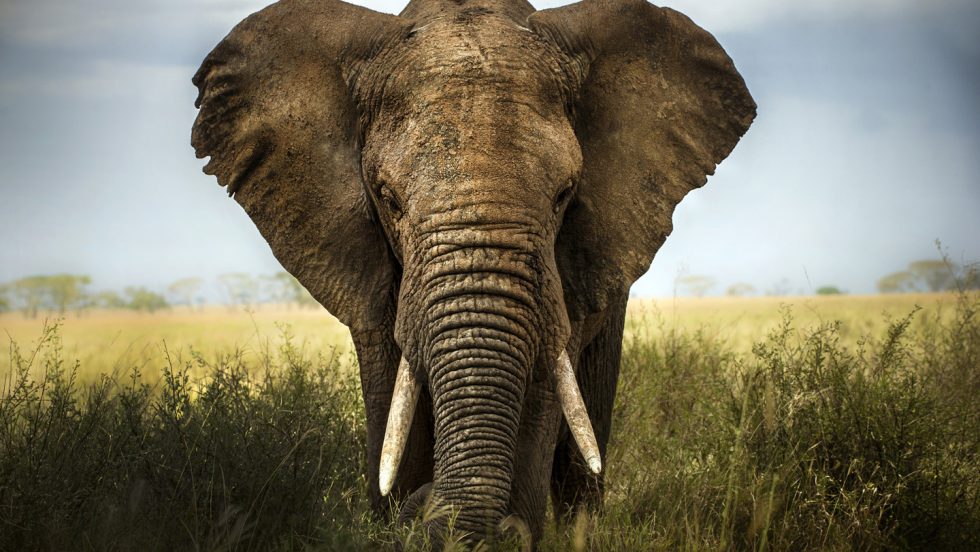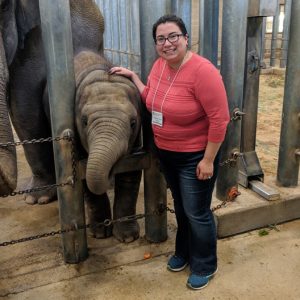
A multidisciplinary team's research could inform the way zoos and other groups design new homes for wildlife.
 The past 50 years have been a time of profound change for U.S. zoos, as they began evolving from the menageries of old into hubs for conservation, science and education. This transformation gained momentum in the early 1970s with the passage of the Endangered Species Act and the introduction of accreditation standards by what is now the Association of Zoos and Aquariums. It continues today.
The past 50 years have been a time of profound change for U.S. zoos, as they began evolving from the menageries of old into hubs for conservation, science and education. This transformation gained momentum in the early 1970s with the passage of the Endangered Species Act and the introduction of accreditation standards by what is now the Association of Zoos and Aquariums. It continues today.
Many modern zoos are radically rethinking how they care for wildlife—an effort in which Natalia Prado, PhD, assistant professor of animal physiology at Adelphi, plays an integral role. Over the past 15 years, she and colleagues in the field have conducted exhaustive research on nearly every zoo elephant facility in the United States, resulting in guidance zoos can use to optimize the welfare of both herds and individual elephants.
Recently, Dr. Prado collaborated with researchers from the Oregon Zoo and the Smithsonian’s National Zoo & Conservation Biology Institute on a four-year study of five Asian elephants during their move to a redesigned, expanded habitat. The findings were published as “Supporting Zoo Asian Elephant (Elephas maximus) Welfare and Herd Dynamics with a More Complex and Expanded Habitat,” the cover story for the September 2021 issue of the scientific journal Animals.1
According to Dr. Prado, the multidisciplinary team that worked on the study—comprising zoo experts, biologists, veterinarians and physiologists—made it unusually rich. “A study like this couldn’t be possible with just one person working in isolation,” she said. “It took a multitude of people to look at the issue and bring their own perspectives to it. That’s what I really like about this field.”
Dr. Prado and her fellow researchers carefully tracked the way elephants’ behavior shifted as they transitioned to their new space, which was designed to focus on the species’ physical, physiological, psychological and social needs. In an effort to encourage natural foraging behavior, the zoo placed feeding stations throughout the habitat, including feeders programmed to release food at unpredictable intervals, and some that required the elephants to reach overhead or bend down. “Disbursement of food with less temporal and spatial predictability increased foraging opportunities, which is important for psychological well-being of this species,” the authors observed.
They also used GPS technology to measure the elephants’ activity in the new habitat, revealing an average walking distance of close to 10 miles per day—higher even than that of some wild elephants. Smithsonian scientists studying wild elephants in Myanmar found the animals to walk fewer than four miles per day.
When it came time to evaluate the elephants’ overall well-being, Dr. Prado drew on research from 2012, when she participated in a larger-scale study of about 200 elephants across the United States to identify biomarkers—such as specific hormones—that can be indicators of an elephant’s psychological state.
Some of the Oregon Zoo elephants showed little outward reaction to the changes in their environment, although researchers noted short-term increases in the “stress hormone” cortisol shortly after the transition. By contrast, other elephants showed changes in their behavior but not their hormone levels. The diversity in reactions was telling. “Elephants are individuals with their own temperaments, and their own place in the social hierarchy,” Dr. Prado said. “One might be excited to explore the new space right away, while another might take months to walk through a new door.”
This research will be invaluable to other zoos that are considering updating their facilities. “It tells us a lot about what is important when caring for a herd with so many different personalities, ages and reproductive statuses,” Dr. Prado noted. “We can take the anecdotal information we get from the keepers and make it more broadly applicable. Other zoos that are thinking about undergoing similar changes will now have guidelines for how they might approach it and what kind of responses they can expect from the animals.”
Dr. Prado believes zoos can remain a vital tool in conserving elephants and other wildlife around the world. “Zoos allow us to learn about animals in ways we aren’t able to do in the wild: up close and over a long period of time,” she said. These lessons could have growing relevance for conservation efforts in range countries, as wildlife increasingly comes under varying levels of human care.
Footnote:
1 Glaeser, Sharon S., and David Shepherdson, Karen Lewis, Natalia Prado, et al. “Supporting Zoo Asian Elephant (Elephas maximus) Welfare and Herd Dynamics with a More Complex and Expanded Habitat.” Animals, vol. 11, iss. 9, 31 August 2021.